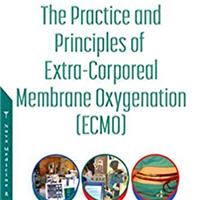Tag: oxygenation
Oxygen Therapy in COVID-19 Patients: The Role of HFNC and CPAP
Oxygen therapy and non-invasive ventilation in COVID-19 should be based on pathophysiological changes and a step-by-step approach should be adopted in choosing the right therapeutic strategy for each patient. Continuous... read more
Aerosolised Surfactant Trial for Preterm Infants with RDS
The AeroFact system can safely deliver aerosolised surfactant to preterm infants with respiratory distress syndrome (RDS) who are on nasal continuous positive airway pressure (nCPAP). 10 infants were enrolled in part 1... read more
Therapeutic vs. Prophylactic Anticoagulation for COVID-19 Patients with Elevated D-dimer Concentration
In patients hospitalised with COVID-19 and elevated D-dimer concentration, in-hospital therapeutic anticoagulation with rivaroxaban or enoxaparin followed by rivaroxaban to day 30 did not improve clinical outcomes and increased... read more
Lactate = LactHATE
Like many others who attended SMACC earlier this year I returned home dazed and confused about the significance of lactate in the septic patient. So like any good (aspiring to be) evidence-based medicine practitioner,... read more
Severity of Hypoxemia may Explain Indeterminate Results in Pediatric Trials of iNO
Inhaled nitric oxide (iNO) is used for refractory hypoxemia in acute respiratory distress syndrome (ARDS) via vasodilation of pulmonary arterioles to ventilated alveoli, particularly in pediatrics. However, iNO has not affected... read more
COVID-19 ARDS has higher EVLWi and PVPI values than non-COVID-19 ARDS
Compared to acute respiratory distress syndrome (ARDS) patients without COVID-19, patients with COVID-19 had similar lung mechanics, but higher extravascular lung water index (EVLWi) and pulmonary vascular permeability index... read more
Risk of Clinical Severity by Age and Race/Ethnicity Among Adults Hospitalized for COVID-19
Older adults and people from certain racial and ethnic groups are disproportionately represented in coronavirus disease 2019 (COVID-19) hospitalizations and deaths. Using data from the Premier Healthcare Database on 181,813... read more
Early Outcomes After Lung Transplantation for Severe COVID-19
The findings from our report show that lung transplantation is the only option for survival in some patients with severe, unresolving COVID-19-associated ARDS, and that the procedure can be done successfully, with good early... read more
Rapid Sequence Induction: Where Did the Consensus Go?
The conduct of Rapid Sequence Induction (RSI) in current emergency practice is far removed from the original descriptions of the procedure. Despite this, the principles – rapid delivery of a definitive airway and avoiding... read more
A Dedicated VV-ECMO Unit during a Respiratory Pandemic
Background: The most critically ill patients with coronavirus disease 2019 (COVID-19) may require advanced support modalities, such as veno-venous extracorporeal membrane oxygenation (VV-ECMO). A systematic, methodical approach... read more
The Practice and Principles of Extra-Corporeal Membrane Oxygenation (ECMO)
As demonstrated in the first book, the management of patients with profound respiratory failure or cardiogenic shock has evolved significantly over the years with advances in diagnostic and therapeutic options. While the... read more

COVID-19: Dual Oxygen Concentrator System for Mechanical Ventilation
Sabah in Malaysian Borneo is among the Malaysian states which reported a high number of detected COVID-19 cases during the current pandemic. Due to geographical challenges and limited resources, clinicians developed novel... read more
Prone Positioning in Spontaneously Breathing Subjects With Moderate or Severe ARDS During Invasive Ventilation
In a retrospective analysis of consecutive intubated subjects with moderate or severe ARDS, related or not to COVID-19, spontaneous breathing during prone positioning (PP) was well tolerated and achieved significant improvement... read more
Prone Positioning of Nonintubated Patients with COVID-19
Despite the significant variability in frequency and duration of prone positioning and respiratory supports applied, prone positioning was associated with improvement in oxygenation variables without any reported serious... read more
Cerebral Oxygen Saturation and Autoregulation During Hypotension in Extremely Preterm Infants
Dopamine had no effect on rScO2 compared to placebo in hypotensive infants. Hypotension and cerebral hypoxia are associated with early intraventricular hemorrhage or death. Prospective cohort study of blinded rScO2 measurements... read more
Expiratory Flow Limitation During Mechanical Ventilation
Expiratory flow limitation (EFL) is present when the flow cannot rise despite an increase in the expiratory driving pressure. The mechanisms of EFL are debated but are believed to be related to the collapsibility of small... read more
Escalation and Withdrawal of Treatment for Patients on ECMO
Discussion between clinicians and families about prognosis and goals was frequent but did not occasion decision-making moments. This study helps explain why communication interventions intended to maintain patient autonomy... read more
Operative Techniques and Recent Advances in Acute Care and Emergency Surgery
The aim of this book is to identify and shed new light on the main surgical practices involved in acute care and trauma surgery. Adopting an evidence-based approach, a multidisciplinary team of surgeons and intensivists... read more

Relationship Between Skeletal Muscle Area and Density and Clinical Outcome in Adults Receiving VV-ECMO
Low skeletal muscle index at the commencement of venovenous extracorporeal membrane oxygenation (VV-ECMO) was associated with a longer duration of venovenous extracorporeal membrane oxygenation, whereas preserved skeletal... read more
Left Ventricular Unloading and ECpella Role
The main reason for the emergency implantation of venoarterial extracorporeal membrane oxygenation (VA-ECMO) is the restoration of adequate systemic perfusion, while protecting the failing heart and promoting myocardial recovery... read more
Effects of Ventilatory Rescue Therapies on the Cerebral Oxygenation of COVID-19 Patients
A new study by Masimo published in Critical Care evaluated the impact of a variety of rescue therapies on the systemic and cerebral oxygenation of mechanically ventilated COVID-19 patients suffering from acute respiratory... read more
Intubation Practices and Adverse Peri-intubation Events in Critically Ill Patients
In this observational study of intubation practices in critically ill patients from a convenience sample of 197 sites across 29 countries, major adverse peri-intubation events—in particular cardiovascular instability—were... read more









